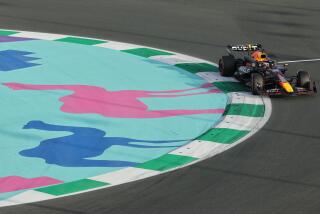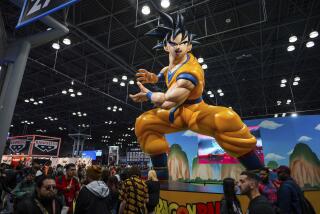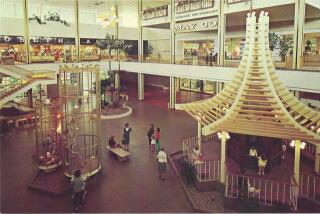Mall World, Isn’t It? : Saudi Shopping Center’s International Crowd Includes Lots of GIs
- Share via
KHOBAR, Saudi Arabia — If you think cruising the malls is an art form in America, check out Al Shula Commercial & Industrial Center in this Persian Gulf city that sits atop the world’s largest oil riches.
Forget South Coast Plaza or Westminster Mall. They don’t even compare.
Every night here, there gathers what has to be one of the most peculiar and exotic blends of humanity ever assembled in one shopping mall.
It’s a mix of West and Mideast, black and white, African and Asian--all strolling to the beat of their own drums. During Ramadan, the just-ended Muslim holy month, the stores stayed open well into the early-morning hours.
“This is the place to cruise,” said Maceo Wylie, a U.S. Army staff sergeant from Columbia, S.C. “It’s where the world meets the world.”
The groups include American GIs fresh from the Gulf War, Asian expatriates and, naturally, Saudi Arabians. They strut their stuff in a lively but peaceful parade that is a blur of skin colors and a babble of different languages.
“What’s neat about it is that it all happens without a lot of problems,” said one U.S. Army colonel.
So many Filipinos congregate at Al Shula that the place has been dubbed Philippine Mall. A mainstay of Saudi Arabia’s blue-collar work force, the Filipinos like to hang back and watch the procession pass.
“There’s nothing else to do here,” explained Edgar Villaneuva, a welder from Manila.
Saudi men visiting the mall usually wear their traditional white robes, occasionally holding hands, as is their custom. Saudi women normally dress in black, with veils covering their faces.
The international mix of characters is the liveliest thing about Al Shula. A drab, three-story structure that covers a square block not far from the Gulf, the mall is poorly lit inside and a bit dingy on the exterior. There are far fancier shopping centers in the area.
Still, GIs, with money to spend but no bars to frequent in a country where alcohol is banned, descend on the mall by the busload.
Waiting to go home, they are stationed all around Khobar and the rest of surrounding eastern Saudi Arabia. Many, dressed in desert fatigues, are drawn to Al Shula because it has a familiar feel.
“It kind of reminds you of home,” said Jeff Amos, an Air Force mechanic from New Orleans.
It’s not hard to see why. If you are tired of the traditional Arab dishes of chicken and rice, you can buy hamburgers, ice cream or pizza.
Indeed, Al Shula is a consumer-goods utopia for soldiers who have spent months in the desert. It has everything--tape decks, basketballs, running shoes and Desert Storm T-shirts galore.
If you want a genuine Pat Riley “3-Peat” shirt--forgetting for a moment that the Los Angeles Lakers did not win that third National Basketball Assn. championship in 1989--you can find it here. Another T-shirt shop carries American coffee and Dove soap.
The American influence in eastern Saudi Arabia dates to the late 1930s, when Standard Oil of California--now known as Chevron Corp.--discovered oil a few miles from here. The area, once considered a worthless desert, contains an estimated 257 billion barrels of oil.
The region was largely developed by Saudi Aramco, as the government-owned oil company is known. It used to be called the Arabian American Oil Co. when it was owned by U.S. oil interests.
Fully nationalized more than a decade ago, Saudi Aramco has its headquarters in nearby Dhahran. Though no longer American-owned, it employs several thousand U.S. expatriates in key technical and engineering jobs.
The GI’s role in protecting the kingdom’s oil fields has enhanced the image of Americans here. Saudis say they feel surer than ever that their oil fields are safe from outside aggression.
But their desert is not safe from U.S.-style hucksterism. All around Khobar, commercial life has an American flavor--from the fast-food joints to the Safeway grocery store that closes only at Muslim prayer time.
The Hardee’s down the street is so popular these days that long lines of soldiers form each night before the hamburger joint opens. There’s even an imitation McDonald’s--known as Med Mac--with red arches instead of yellow ones.
More to Read
Sign up for The Wild
We’ll help you find the best places to hike, bike and run, as well as the perfect silent spots for meditation and yoga.
You may occasionally receive promotional content from the Los Angeles Times.






